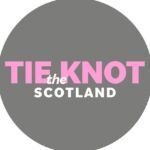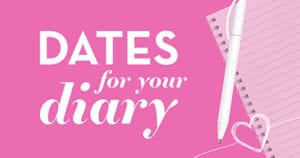Most men look fantastic in a kilt – but only if it fits right. Follow our experts’ advice and you’ll cut a dash on the big day
Click on the image below to rotate through the images or click on the thumnbnails at the bottom the page for more details.
[slideshow id=16 w=460 h=650]“Has your budgie died?” was a common playground taunt when I was growing up. For those of you not familiar with the phrase, it was usually aimed at boys who had taken a stretch and started to outgrow their trousers, leaving them with ankles exposed and breeks flying like a flag at half mast (a sign of respect for the ‘dead budgie’).
Boys being teased for ill-fitting clothes at school is one thing, but a man dressed for his wedding day should never be the subject of ridicule – a badly fitting kilt outfit can look just as ridiculous as too-short trousers. If ever there was a day to look pin-sharp, it’s the day you walk up the aisle.
Your average bloke doesn’t cut about in a kilt every day, so – whether you’re hiring or buying – it usually takes a visit to a Highlandwear specialist to get the fit spot on. Cameron Foster, Edinburgh store manager at Slanj Kilts (slanjkilts.com), comments that “there is an undoubted feeling of confidence to be had from knowing you are doing things right. And, as Gok Wan will tell you, confidence is the key to looking good.” With that in mind, we’ve spoken to some of Scotland’s top kilt stores for this guide to getting the fit spot on.
THE FIT OF THE KILT
Bowdens in Edinburgh (bowdenskilts.co.uk) has been kilt-ing out men for 97 years, so there’s no doubt store manager David Hughes knows a thing or two about the fit of this most crucial of components. “The kilt should be worn firmly by the straps and buckles at the waist. The hem should come to the crest of the kneecap, thus showing the knee,” he says.
Laura Shek at MacGregor & MacDuff (macgregorandmacduff.co.uk) – a company with five stores in the west of Scotland – agrees, informing me that the kilt should be worn on the navel or, if preferred, roughly an inch above the navel. “Comfort is the most important thing,” she says. “The length of the kilt should hang down towards the middle of the knee. Don’t let it hang below the knee – you want to show off a bit of leg!”
The team at McCalls (mccallsltd.org) share that view. They’ve noticed that trousers are often worn low-slung in keeping with current fashion trends, but advise against this when wearing a kilt. “A common mistake, especially among young men, is to wear the kilt on the hip, but any reputable kiltmaker should point this out as a no-no when measuring,” notes assistant manager Lyndsey Boyd.
THE LENGTH AND WEIGHT OF THE KILT
A quality kilt uses eight yards of cloth. This might sound like a lot, says Slanj’s Cameron Foster, but when you consider that your average kilt has over 30 pleats, each of which is about four inches deep, you can begin to understand where it all goes. “You can use less fabric if you like, but it’s very much to the detriment of the way the kilt sits and sways,” he observes. Likewise, the weight of the cloth has to be right. “Medium (13oz), heavy (16oz) and regimental weight (18oz) are all acceptable,” says Cameron. While regimental is seldom used for weddings, the consensus among experts is to be wary of any fabric under 13oz. “It’s not heavy enough to keep your pleats in order, so watch out for unscrupulous kiltmakers trying to cut corners with less yardage and lighter material: it really is a false economy,” continues Cameron.
STYLES OF THE JACKET
Cameron Foster tells me that “it has probably been the rejuvenation of the jacket that has really brought Highlandwear back into fashion”. Indeed, the choices and terminology can be a tad bewildering, but fear not, our experts are on hand to explain.
“Gone are the days where you would go to a wedding and see every man wearing the same ill-fitting Prince Charlie,” says Cameron. “That’s not to say there is no room for Prince Charlie jackets these days – if you are going to a black-tie event, or simply enjoy wearing a bow-tie, this is your boy!”
So what is a Prince Charlie? “This ‘coatee’ and waistcoat or vest is by far the most popular formal jacket for eveningwear,” reveals David Hughes at Bowdens. “It’s usually made in black barathea wool but other cloths, such as velvet, can be used.”
McCalls’ Lyndsey Boyd explains its other distinctive hallmarks: “Traditionally, it’s black with silver buttons and satin lapels. This jacket is short, stopping at the waist, with two small tails on the back. It also has a three-button waistcoat, which meets the waistband of the kilt, so you don’t see any shirt.” This is the only style of jacket that must have a waistcoat with it, Laura Shek tells me. “Both a three-button or a five-button are fine.”
The Argyll is traditionally made in 13oz black barathea wool, but also comes in grey or other hues of tweed. “Longer than the Prince Charlie, it has a square finish with silver buttons on the front and raised cuffs with matching buttons. It is often worn with a five-button matching waistcoat, but not always,” says David Hughes.
The Crail is similar to the Argyll, Lyndsey Boyd informs me, the difference being the detail on the cuff: “The Argyll has a Gauntlet cuff, with piping detail and three buttons going across the cuff, while the Crail is finished in the same style as a Prince Charlie cuff, with three buttons going up the sleeve.” In terms of fabric, Laura Shek says that traditionally the Crail is made from tweed with bone or stag-horn buttons. “However, it has been updated to suit more modern tastes,” she comments. For example, McCalls has introduced a more contemporary take on the Crail, called the Edwardian, as Lyndsey Boyd describes: “We have removed epaulettes and cuff details, changed button finishes and introduced new fabrics to create a stylish look.”
The Sherrifmuir and the Regulation Doublet are two of the most formal military styles. “Traditionally, the doublet would have been the most formal jacket available, suitable for white-tie events and general showing-off,” laughs Cameron Foster. “At Slanj we’ve played around with it a little and come up with a contemporary twist which is popular with grooms looking to stand out from the rest of the wedding party.”
Lyndsey Boyd explains their typical cut: “The Sherrifmuir jacket meets the waistband of the kilt, and then has detailed flaps along the back and either side of the front. It also has a high mandarin collar, and is worn open, with a fastening loop secured around the top button. It’s worn with a five-button, straight-bottom waistcoat, which again meets the kilt. The Regulation Doublet is similar to the Prince Charlie in style, but with the same detailed flaps as the Sherrifmuir.”
The Tweed “is a traditional day jacket, for more casual events,” she adds. “It can be in solid colours, or a check. It fits in the same way as the Argyll, and can be finished with different details, from the Crail cuff and epaulettes to a simple single-button cuff, without epaulettes. This can be worn with or without a waistcoat.”
There are other styles of jackets that are often exclusive to particular stores, having being designed by in-house tailors. At Slanj, for example, you’ll find the Holyrood, “which has three buttons and sits a little lower than a traditional kilt jacket. This is closer to a suit jacket in style, but with its panel cuffs and black metal buttons it’s a nice blend of the traditional and the modern,” explains Cameron Foster.
The tailor at Macgregor & Macduff has designed a jacket called the Glen Orchy in tweed or black, as Laura Shek explains: “This is a semi-formal style of jacket, but it can be dressed up or down to suit formal and semi-formal occasions.”
FIT OF THE JACKET
There are a few things to look out for when trying on a jacket. Cameron Foster shares his knowledge from the Slanj fitting rooms, saying that the two things you must get right are the shoulders and the length. “If there are lines between the shoulder blades then is almost certainly too tight. If the front sticks out then it’s probably too big. If you are standing normally and can move your drinking hand from, say, bar height to mouth height without it feeling as if the jacket is going to rip, it’s probably fine.”
He also stresses that jacket and kilt should be tried on together. “As the kilt sits higher than trousers usually do, they need to be seen together to be certain of the fit. Err on the long side if you’re not sure. If the jacket or waistcoat are too short, by the end of the night your shirt will be poking out all over the place and you’ll look as if you’re stuck in a giant polo mint! Good kiltmakers will offer an alteration service to help with any other sizing issues – just ask.”
THE SHIRT AND TIE
“Three types of shirt complement Highland dress: a standard collar, plain-finish shirt; a wing-collar shirt; and a Edwardian swept wing collar,” explains David Hughes. “Whichever you choose should always be worn tucked in neatly.” Lyndsey Boyd at McCalls adds that “the cuff of the shirt should slightly protrude from the jacket sleeves”. She also explains which shirt goes with which jacket. “For a Prince Charlie, you’d wear a white wing-collar shirt, with a fly front or studs. For the Argyll or Crail, you can wear a full-collar, cut-away shirt. This allows for all neckwear options – bow-tie, ruche cravat or straight tie.”
“Neckwear is a great way to tie in to the rest of the wedding,” says Cameron Foster. David Hughes agrees: “It’s perfect for adding colour to your outfit and matching your wedding theme.”
Some grooms go for the tie-less option that is the ‘ghillie’ shirt, also known as the Jacobean or Frontiersman shirt. “It is a very casual way of wearing a Highland outfit,” notes Laura Shek. “The shirts are worn loosely, making them popular for ceilidhs.”
ACCESSORIES
Once you have the kilt and jacket in the bag, there are plenty of accessories to have fun with.
Sporrans: “Your choice of jacket will dictate whether you wear a dress, semi-dress or day sporran,” says David Hughes. Formal jackets like the Prince Charlie call for a dress sporran, while you could get away with a day sporran with a more casual tweed jacket. In terms of fit,
“The sporran should be placed at the best height for protecting your assets: just below the bottom of your waistcoat,” says Cameron Foster.
Belts should not be worn if you have a waistcoat, Laura Shek explains. “It is not etiquette in Highland dress. But if your outfit does not include a waistcoat, a belt is called for.”
Sgian dubhs “are normally worn, but not essential – and in the hire trade, they’re usually plastic anyway,” points out David Hughes. “Wear it tucked into the sock on the outside of the leg with most of the handle showing,” adds Laura Shek. Either leg is fine.
Kilt pins are decorative items: “The pin should be placed through the front apron of the kilt only,” says Laura Shek, “about two inches from the bottom and two inches from the side of the kilt. If there is line on the tartan in that position, the kilt pin will be placed on this line.”
Hose (aka socks) and flashes depend on the colour and look of the outfit. “Typically, cream socks give a more traditional look and black a more modern look,” advises Laura. “These are worn approximately two inches below the bottom of the knee and are folded at the top to hide the garter with the flashes.” The flashes (those little bits of fabric that hang from the sock) can either be tartan or a solid colour to pick up a hue in the kilt.
FORMALITIES AND FINAL WORDS
“The Prince Charlie is traditionally a formal evening jacket, while the Argyll/Crail is a semi-formal style, good for day and evening-wear,” says Laura Shek. “But it’s becoming more common to see them worn out of their usual circumstances, as society is less strict on the formalities these days. It also means that all styles are appropriate for wedding attire.”
That doesn’t give you free rein to pick-and-mix among the styles, though. “The key to a successful kilt outfit is keeping all the elements consistent,” sums up Cameron Foster.








